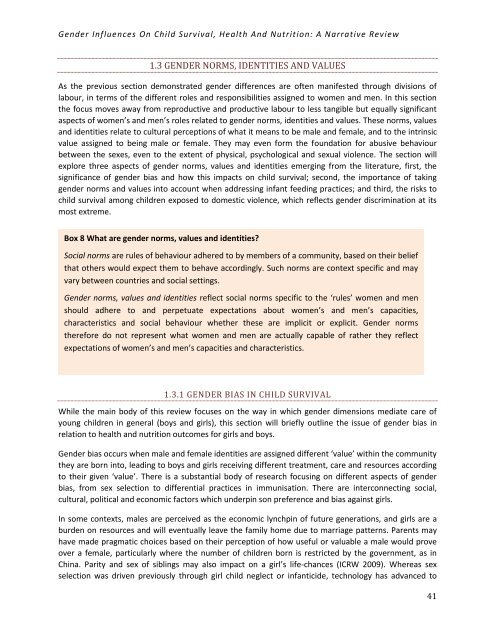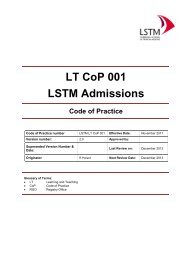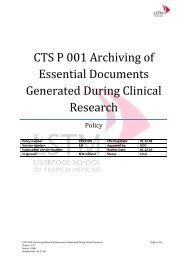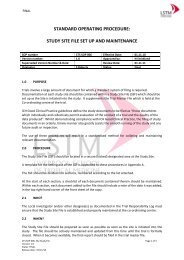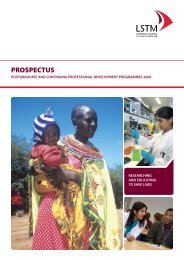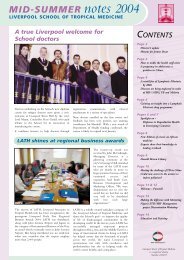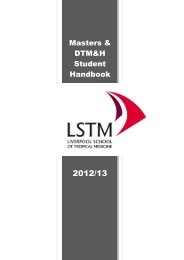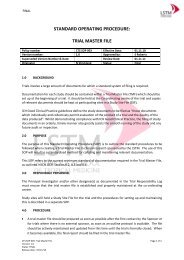Gender influences on child survival, health and nutrition: a ... - Unicef
Gender influences on child survival, health and nutrition: a ... - Unicef
Gender influences on child survival, health and nutrition: a ... - Unicef
Create successful ePaper yourself
Turn your PDF publications into a flip-book with our unique Google optimized e-Paper software.
<str<strong>on</strong>g>Gender</str<strong>on</strong>g> Influences On Child Survival, Health And Nutriti<strong>on</strong>: A Narrative Review<br />
1.3 GENDER NORMS, IDENTITIES AND VALUES<br />
As the previous secti<strong>on</strong> dem<strong>on</strong>strated gender differences are often manifested through divisi<strong>on</strong>s of<br />
labour, in terms of the different roles <strong>and</strong> resp<strong>on</strong>sibilities assigned to women <strong>and</strong> men. In this secti<strong>on</strong><br />
the focus moves away from reproductive <strong>and</strong> productive labour to less tangible but equally significant<br />
aspects of women’s <strong>and</strong> men’s roles related to gender norms, identities <strong>and</strong> values. These norms, values<br />
<strong>and</strong> identities relate to cultural percepti<strong>on</strong>s of what it means to be male <strong>and</strong> female, <strong>and</strong> to the intrinsic<br />
value assigned to being male or female. They may even form the foundati<strong>on</strong> for abusive behaviour<br />
between the sexes, even to the extent of physical, psychological <strong>and</strong> sexual violence. The secti<strong>on</strong> will<br />
explore three aspects of gender norms, values <strong>and</strong> identities emerging from the literature, first, the<br />
significance of gender bias <strong>and</strong> how this impacts <strong>on</strong> <strong>child</strong> <strong>survival</strong>; sec<strong>on</strong>d, the importance of taking<br />
gender norms <strong>and</strong> values into account when addressing infant feeding practices; <strong>and</strong> third, the risks to<br />
<strong>child</strong> <strong>survival</strong> am<strong>on</strong>g <strong>child</strong>ren exposed to domestic violence, which reflects gender discriminati<strong>on</strong> at its<br />
most extreme.<br />
Box 8 What are gender norms, values <strong>and</strong> identities?<br />
Social norms are rules of behaviour adhered to by members of a community, based <strong>on</strong> their belief<br />
that others would expect them to behave accordingly. Such norms are c<strong>on</strong>text specific <strong>and</strong> may<br />
vary between countries <strong>and</strong> social settings.<br />
<str<strong>on</strong>g>Gender</str<strong>on</strong>g> norms, values <strong>and</strong> identities reflect social norms specific to the ‘rules’ women <strong>and</strong> men<br />
should adhere to <strong>and</strong> perpetuate expectati<strong>on</strong>s about women’s <strong>and</strong> men’s capacities,<br />
characteristics <strong>and</strong> social behaviour whether these are implicit or explicit. <str<strong>on</strong>g>Gender</str<strong>on</strong>g> norms<br />
therefore do not represent what women <strong>and</strong> men are actually capable of rather they reflect<br />
expectati<strong>on</strong>s of women’s <strong>and</strong> men’s capacities <strong>and</strong> characteristics.<br />
1.3.1 GENDER BIAS IN CHILD SURVIVAL<br />
While the main body of this review focuses <strong>on</strong> the way in which gender dimensi<strong>on</strong>s mediate care of<br />
young <strong>child</strong>ren in general (boys <strong>and</strong> girls), this secti<strong>on</strong> will briefly outline the issue of gender bias in<br />
relati<strong>on</strong> to <strong>health</strong> <strong>and</strong> nutriti<strong>on</strong> outcomes for girls <strong>and</strong> boys.<br />
<str<strong>on</strong>g>Gender</str<strong>on</strong>g> bias occurs when male <strong>and</strong> female identities are assigned different ‘value’ within the community<br />
they are born into, leading to boys <strong>and</strong> girls receiving different treatment, care <strong>and</strong> resources according<br />
to their given ‘value’. There is a substantial body of research focusing <strong>on</strong> different aspects of gender<br />
bias, from sex selecti<strong>on</strong> to differential practices in immunisati<strong>on</strong>. There are interc<strong>on</strong>necting social,<br />
cultural, political <strong>and</strong> ec<strong>on</strong>omic factors which underpin s<strong>on</strong> preference <strong>and</strong> bias against girls.<br />
In some c<strong>on</strong>texts, males are perceived as the ec<strong>on</strong>omic lynchpin of future generati<strong>on</strong>s, <strong>and</strong> girls are a<br />
burden <strong>on</strong> resources <strong>and</strong> will eventually leave the family home due to marriage patterns. Parents may<br />
have made pragmatic choices based <strong>on</strong> their percepti<strong>on</strong> of how useful or valuable a male would prove<br />
over a female, particularly where the number of <strong>child</strong>ren born is restricted by the government, as in<br />
China. Parity <strong>and</strong> sex of siblings may also impact <strong>on</strong> a girl’s life-chances (ICRW 2009). Whereas sex<br />
selecti<strong>on</strong> was driven previously through girl <strong>child</strong> neglect or infanticide, technology has advanced to<br />
41


